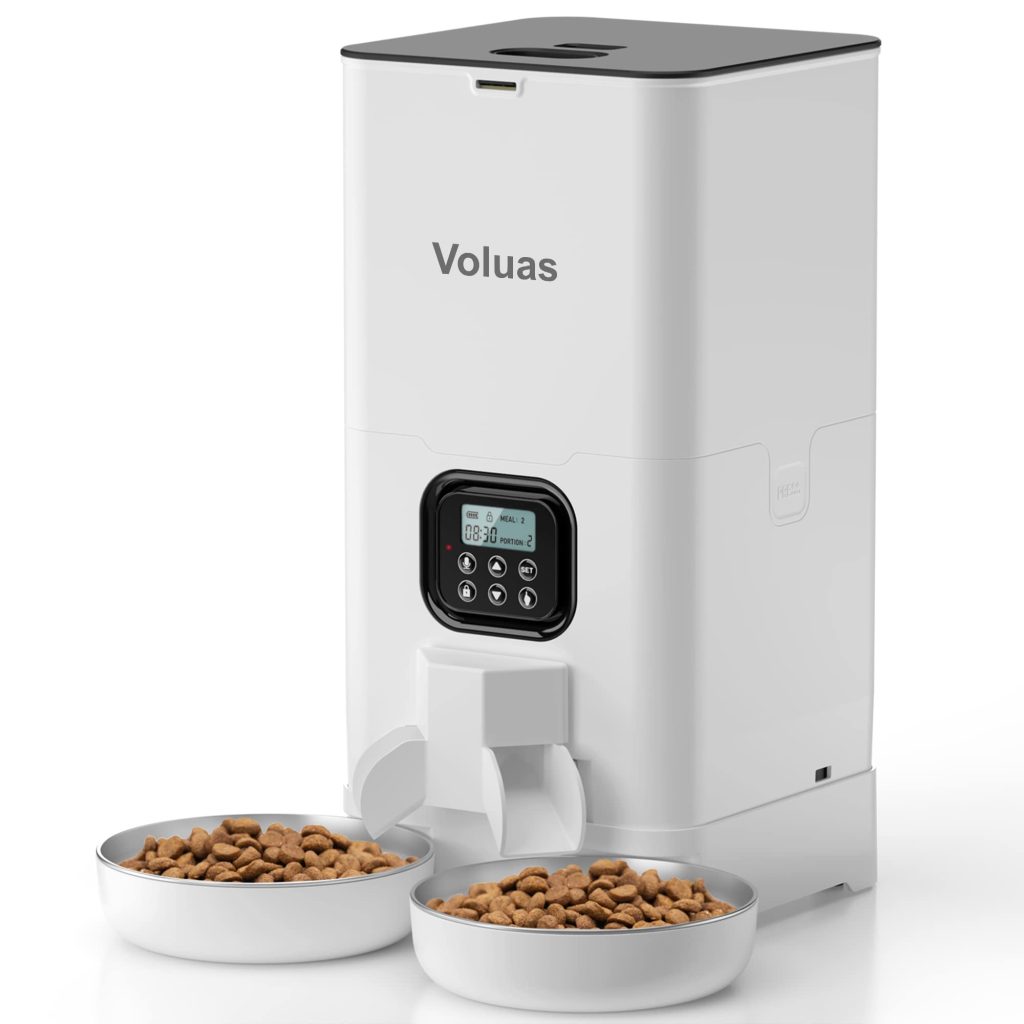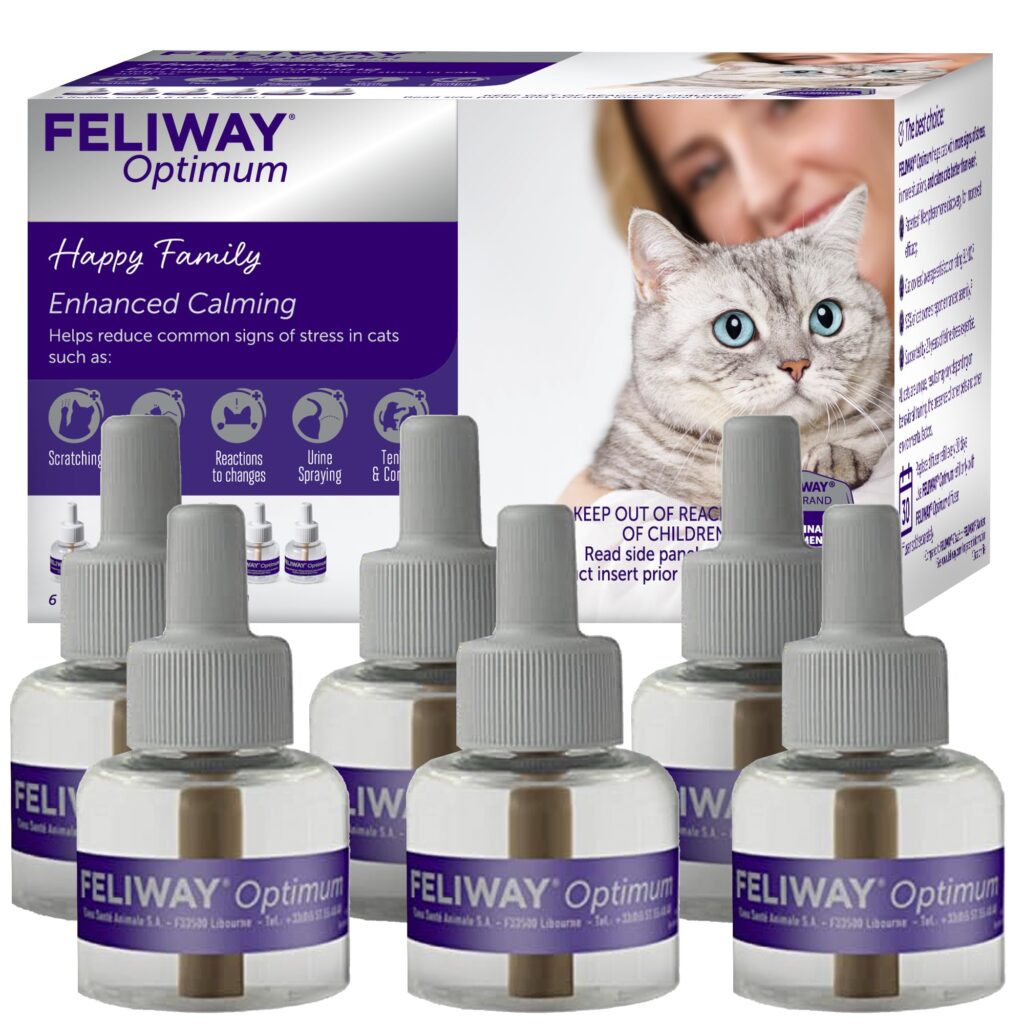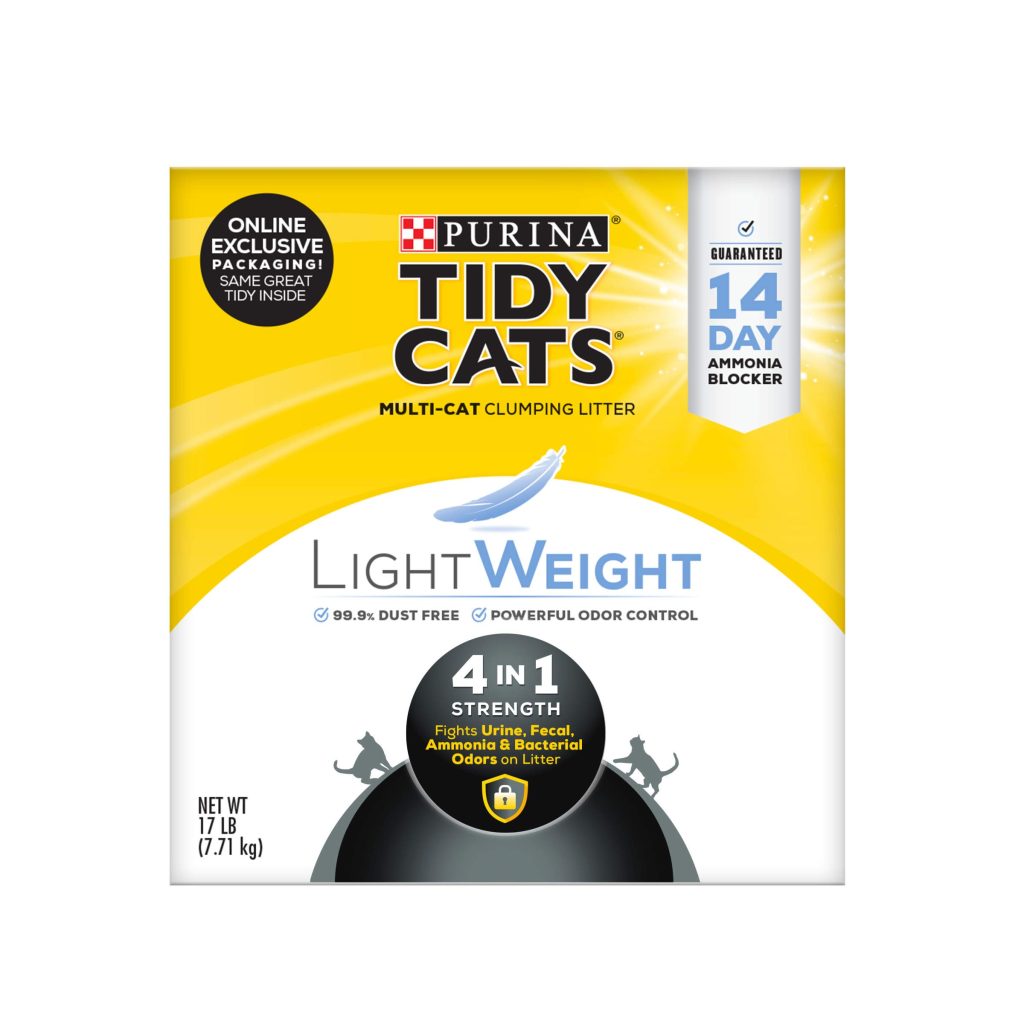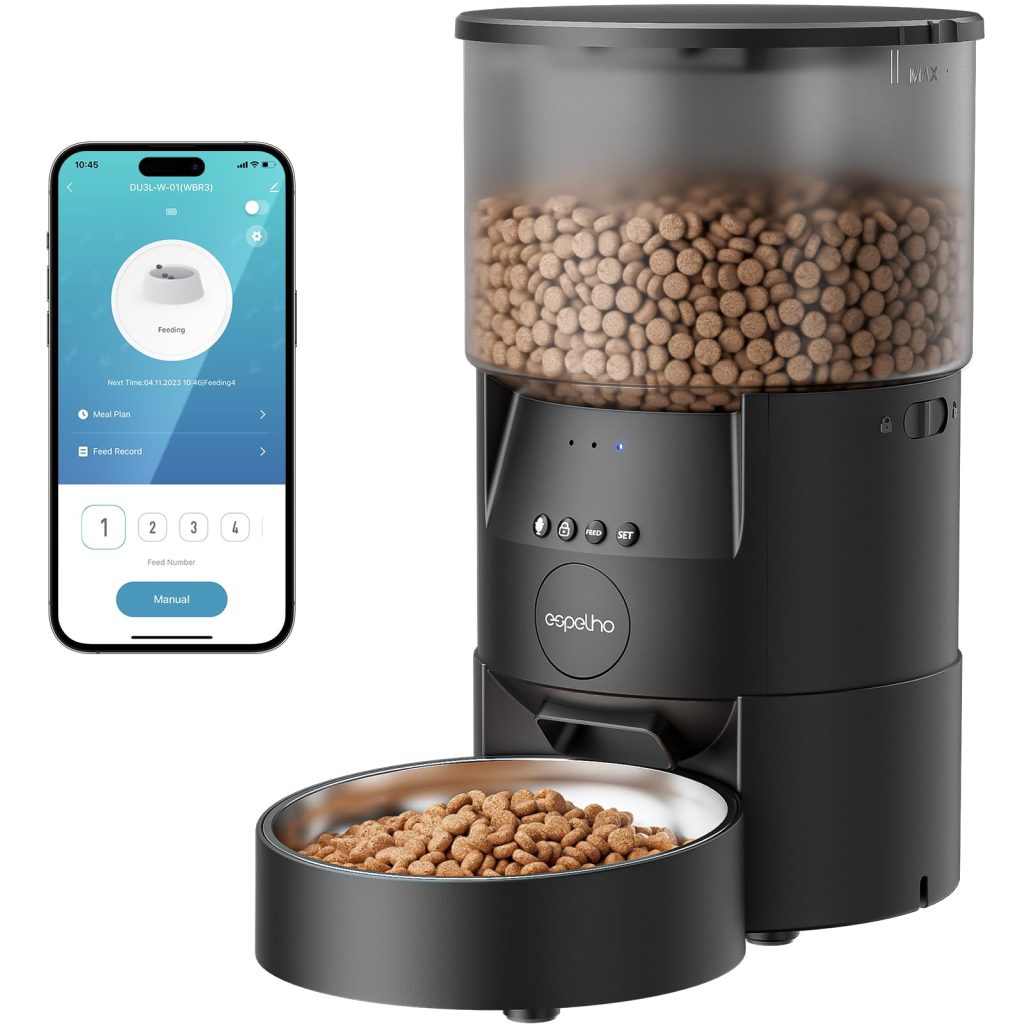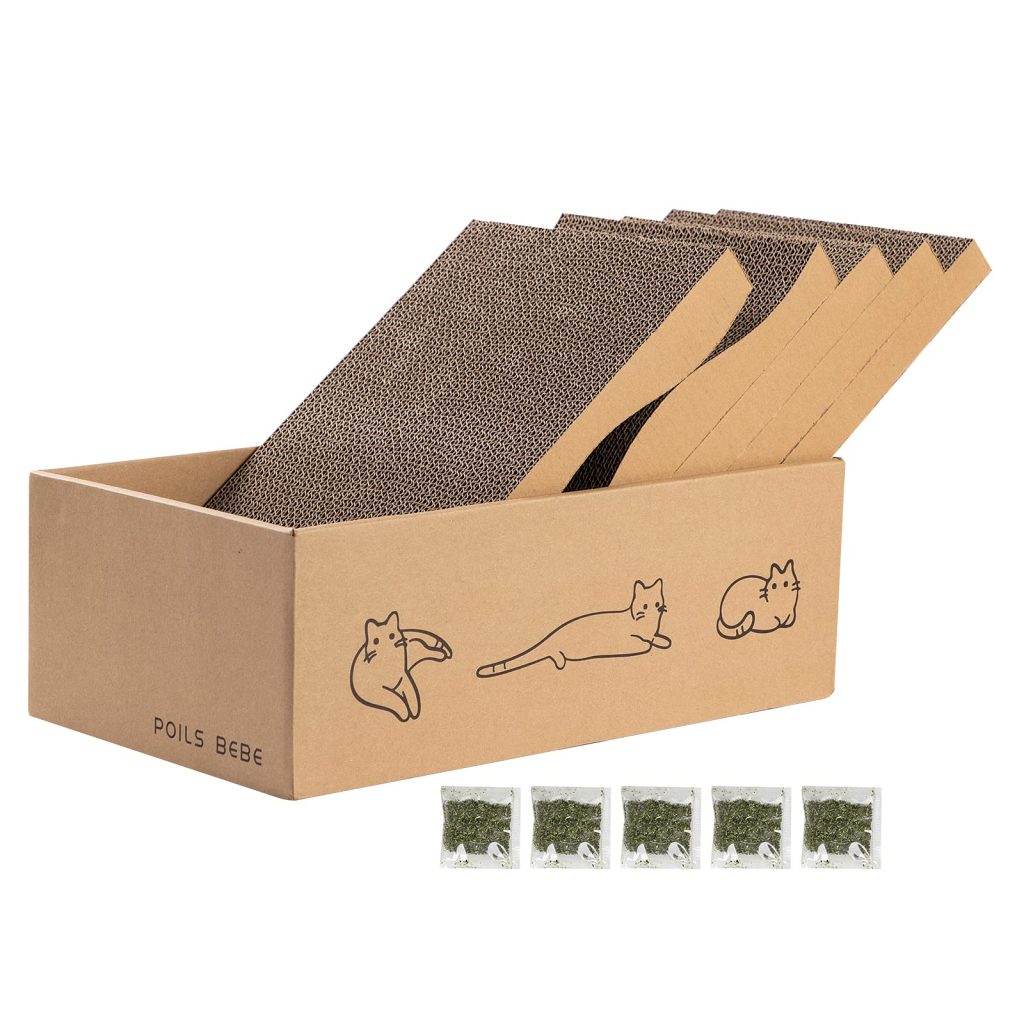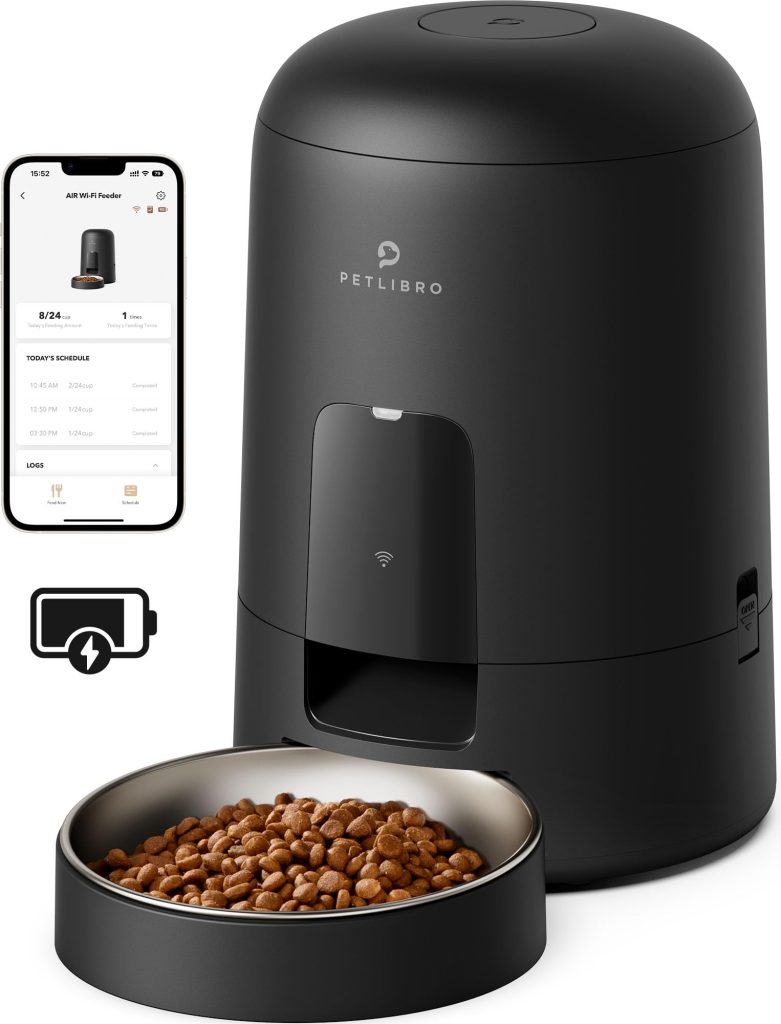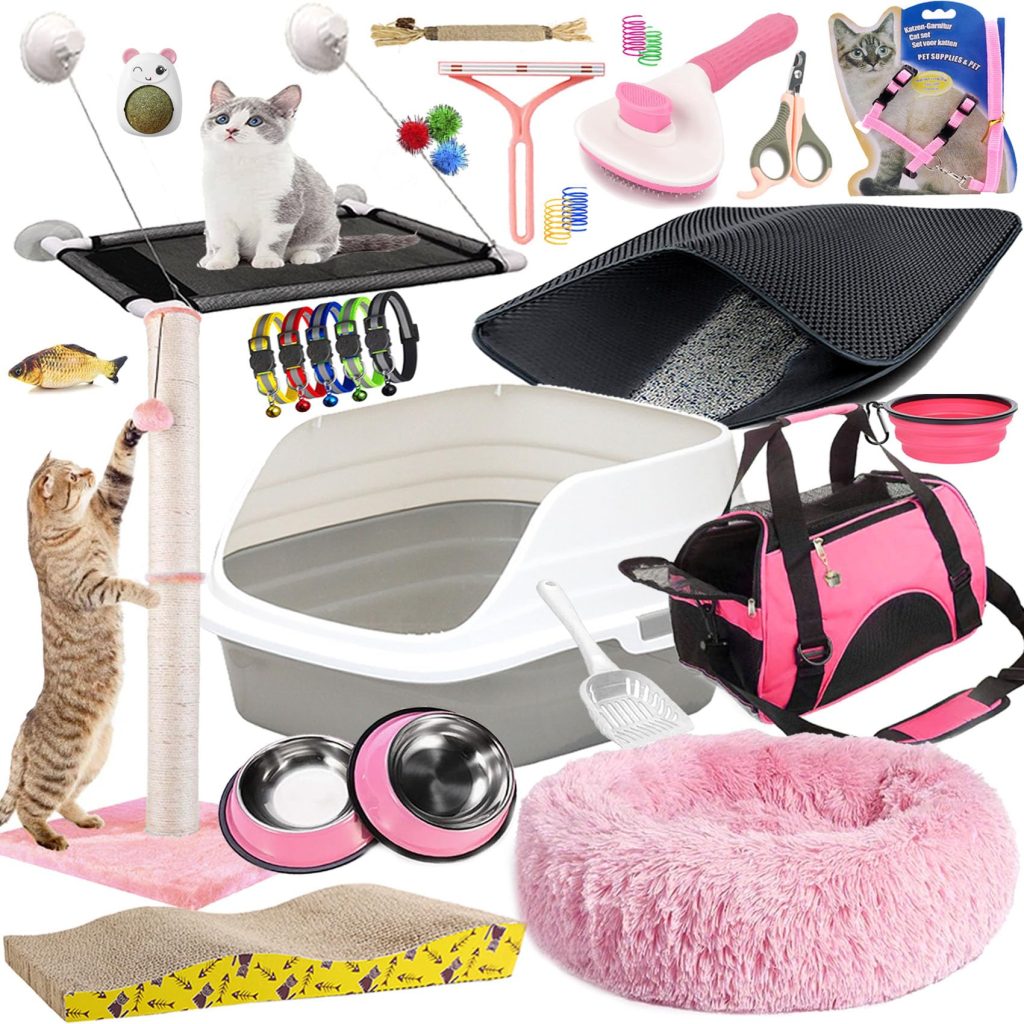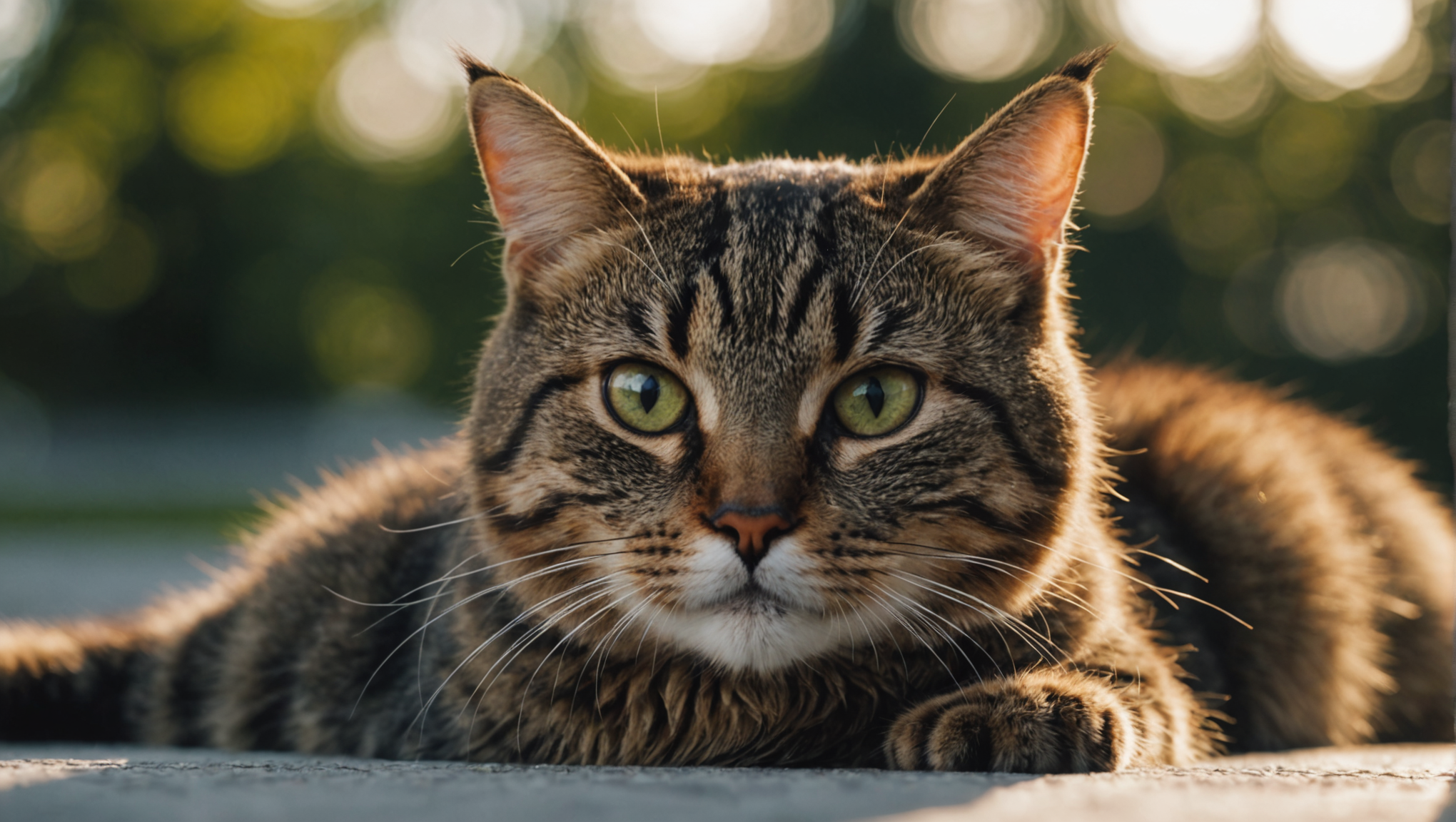
Gastrointestinal issues in cats can often manifest in subtle yet telling ways, requiring a keen eye and a considerable amount of awareness on the part of the caregiver. Their complex digestive systems, finely tuned to a natural diet of protein and moisture, can become easily upset by a variety of internal and external factors. In particular, it is essential to appreciate how stress, dietary indiscretion, or abrupt changes in their environment can instigate gastrointestinal disturbances, leading to symptoms ranging from vomiting and diarrhea to lethargy and a general decline in appetite.
Understanding the nuances of a cat’s gastrointestinal health very important for ensuring their overall well-being. The gastrointestinal tract of a cat serves not merely as a conduit for food but as an intricate system that integrates digestion, nutrient absorption, and the maintenance of gut flora—the symbiotic bacteria that play a pivotal role in processing the food we so willingly offer them. By fostering a balanced microbiome, we bolster our feline companions’ immune systems and enhance their nutrient absorption, facilitating optimal health.
In particular, one must think how an array of dietary components influence the gut. For instance, high-quality proteins, readily digestible carbohydrates, and essential fatty acids can contribute to a harmonious digestive process. According to veterinary nutritionists, the inclusion of fiber—whether soluble or insoluble—can further support gastrointestinal function by promoting normal gut motility and preventing the formation of hairballs and constipation. The balance of omega-3 and omega-6 fatty acids, found in certain fish oils, can also possess anti-inflammatory properties that are invaluable in the context of inflammatory bowel disease, a common gastrointestinal disorder among felines.
Moreover, it’s imperative to remain vigilant regarding sudden dietary changes, which can be quite detrimental. Cats, unlike dogs, tend to be quite finicky, and abrupt transitions from one diet to another can result in gastrointestinal distress. Therefore, any dietary adjustment should ideally be conducted over a span of several days or even weeks, allowing the feline digestive system to acclimate gradually. A rule of thumb is to incorporate the new food gradually—starting with 25% of the new diet mixed with 75% of their current food, progressively shifting that ratio until the transition is complete.
Stress, too, is often underestimated as a catalyst for gastrointestinal issues in cats. Situations that might appear innocuous to us, such as the introduction of a new pet or even changes in the household routine, can create anxiety for our furry friends. The physiological response to stress in cats can manifest as alterations in their gastrointestinal function, thus showcasing the deep connection between mind and body. By establishing a calm environment, engaging in regular play, and attending to their sensory needs, caregivers can mitigate stressors that disrupt gastrointestinal health.
It is through an understanding of these multifaceted factors that we can take proactive steps in supporting our cats’ gastrointestinal health. Knowledge is indeed power; by monitoring our feline friends closely for any signs of distress, we can make informed decisions and, when necessary, consult with veterinary professionals who specialize in digestive health. After all, as the philosopher Aristotle once said, “The whole is greater than the sum of its parts” — a sentiment that resonates profoundly in the delicate interplay of diet, environment, and emotional well-being concerning our beloved cats.
Common gastrointestinal disorders
Among the most prevalent gastrointestinal disorders impacting felines, one cannot overlook the scourge of acute gastroenteritis. Characterized by inflammation of the stomach and intestines, this condition frequently presents itself through symptoms such as vomiting, diarrhea, and abdominal discomfort. While it can arise from viral or bacterial infections, dietary indiscretions—such as the ingestion of spoiled food or foreign objects—are often the culprits. To illustrate, a cat that raided the trash, feasting on leftovers or unfathomable items, might very well find itself in a tumultuous state of gastrointestinal upheaval. Thus, vigilance around what our feline friends consume is paramount.
Another common disorder is inflammatory bowel disease (IBD), a chronic condition characterized by persistent inflammation of the gastrointestinal tract. The etiology of IBD remains somewhat elusive, mired in the complexities of immune system dysfunction and potential dietary sensitivities. Symptoms can vary in severity but may include chronic vomiting, diarrhea, and weight loss. Cats suffering from IBD often display a voracious appetite, yet paradoxically, maintain a lean physique due to malabsorption of vital nutrients. The diagnosis of this disorder typically requires a combination of clinical signs, laboratory tests, and often, a biopsy of the intestinal lining for definitive identification. As such, it serves as a poignant reminder of the necessity of comprehensive veterinary care.
Additionally, constipation and fecal impaction can also plague our cats, leading to considerable discomfort and health repercussions. This condition may be exacerbated by a lack of fiber in the diet, dehydration, or underlying health issues such as thyroid dysfunction. Cats are notoriously adept at hiding their discomfort, yet signs can manifest through infrequent or painful defecation, straining, or lethargy. Regular veterinary check-ups and discussions about dietary sufficiency can facilitate early detection and effective management of this disorder.
Furthermore, pancreatitis—a condition resulting in inflammation of the pancreas—can also create significant gastrointestinal distress. Symptoms often include sudden onset vomiting, abdominal pain, and, in some instances, fever. Interestingly, this condition may arise abruptly and can be associated with the consumption of fatty foods or certain medications. The management of pancreatitis frequently requires a meticulous approach, with veterinarians often recommending a temporary cessation of food intake followed by a gradual reintroduction of a low-fat diet. Such careful orchestration of dietary decisions illuminates the profound impact of nutrition on our cats’ health.
A notable concern for cat caregivers must also be the risk of foreign body obstruction. Curious by nature, cats may consume items that lead to blockages in their gastrointestinal tract, posing an acute and life-threatening risk. Symptoms can vary, but may include excessive vomiting, lethargy, or a complete cessation of appetite. In such instances, immediate veterinary intervention is crucial; delay can lead to severe complications and even mortality. Hence, ensuring that hazardous items and inappropriate foodstuffs are out of reach is a critical aspect of preventive care.
In the context of gastrointestinal disorders, knowledge of common afflictions equips caregivers with the ability to recognize the early signs of distress. By fostering a proactive approach—empowering ourselves with vital knowledge, maintaining open lines of communication with veterinary providers, and fostering an environment that minimizes stressors—we not only enhance our cats’ quality of life but also fortify their health against the unpredictable nature of gastrointestinal diseases. Such vigilance honors the bond we share with these enigmatic creatures, attuning ourselves to their needs in a world that often seems overwhelmingly complex.
Diagnosis and treatment options
When exploring the territory of diagnosis and treatment for gastrointestinal issues in cats, it is vital to approach this multi-layered challenge with a profound sense of attentiveness and methodical inquiry. A comprehensive understanding of the feline digestive system paves the way for accurate assessments, guiding pet owners and veterinarians alike in their quest for answers. Veterinary professionals utilize a plethora of diagnostic tools, ranging from detailed physical examinations to advanced imaging techniques like ultrasounds or radiographs, all of which are pivotal in unraveling the complexities of gastrointestinal malady.
Initial examinations usually begin with a thorough history and physical check-up, where veterinarians seek to discern the pattern and duration of symptoms, dietary habits, and any significant environmental changes. This careful listening and note-taking form the cornerstone of the diagnostic process, as informed inquiries can lead to insights that might otherwise remain obscured. A seemingly trivial change, such as an appetite shift or alteration in litter box behavior, can unlock crucial information regarding a cat’s health. As such, being observant and methodical can facilitate a clearer diagnostic path, effectively guiding practitioners in their clinical decision-making.
Should the physical exam and history yield inconclusive results, further investigations such as blood tests, urinalysis, and fecal examinations may be employed to uncover underlying causes. Blood tests, for instance, can provide essential insights into organ function and metabolic health, potentially elucidating signs of infection, inflammation, or systemic diseases that might contribute to gastrointestinal issues. Fecal examinations can detect parasites, imbalances, or infections that could contribute to the feline’s distressful condition.
Moreover, advanced imaging options like ultrasound and endoscopy can play an important role in the diagnosis of more intricate disorders. An ultrasound allows for a non-invasive look at the abdominal organs, providing valuable information on structure and function. Endoscopy can further assist in the diagnosis of issues like inflammatory bowel disease or gastrointestinal foreign bodies, allowing for direct visualization of the gut lining, and in some cases, the collection of tissue samples for histopathology. This multifaceted approach to diagnostics is pivotal, as gastrointestinal conditions often overlap in symptoms but require distinct interventions.
Once a diagnosis has been established, treatment protocols can vary significantly based on the specific disorder diagnosed. For inflammatory bowel disease, for instance, a long-term management strategy may include dietary modification with the introduction of novel protein sources or hypoallergenic diets to minimize immune responses that exacerbate inflammation. The incorporation of probiotics may also enhance recovery, helping to restore the balance of beneficial gut bacteria that plays a critical role in digestion.
When confronting acute gastroenteritis, treatment may involve the temporary withholding of food, allowing the gastrointestinal tract to settle, followed by a gradual reintroduction of a bland diet, such as boiled chicken or rice, until normal function resumes. This approach underscores the value of patience in the healing process, as the gastrointestinal tract craves stability after distress.
For conditions such as pancreatitis, the management of dietary fat intake becomes paramount, often necessitating an emphasis on a low-fat diet to alleviate the burden on the pancreas. Medication may also be prescribed to manage pain or inhibit inflammation, but it’s the fine balance of nutritional care that often determines long-term success in recovery. As Jean Donaldson aptly notes, “the ultimate goal is not just to fix what is broken, but to help the animal thrive.” This philosophy resonates strongly in the treatment of gastrointestinal issues in cats, where holistic care emerges as a guiding principle in the journey towards wellness.
In scenarios warranting surgical intervention—such as foreign body obstruction—swift action becomes indispensable. Surgical procedures may involve the removal of the obstruction or, in more severe cases, resection of necrotic sections of the intestine. Such interventions, while sometimes necessary, can be formidable, placing immense importance on the pre- and post-operative care, including nutritional support to aid swift recovery.
What remains abundantly clear is that the path from diagnosis to treatment is interwoven with the nuances of feline health and well-being. Each choice made, every food introduced, and the attention to hydration and environmental factors are pivotal in fostering recovery and preventing recurrence of gastrointestinal issues. As caregivers, we bear not only the responsibility but also the privilege of advocating for our companions, crafting an enriched environment that nurtures their health, fosters resilience, and reinforces the timeless bond we share. In the labyrinth of feline gastrointestinal health, knowledge equips us to navigate with a steady hand, ensuring that our cats not only survive but truly thrive amidst life’s complexities.
Preventative care and dietary management
The cornerstone of effective preventative care and dietary management for our feline companions thrives on a profound understanding of their intrinsic nutritional needs and the holistic environment in which they thrive. It begins with the recognition that cats are obligate carnivores, meaning their diets must be primarily composed of animal-based proteins to facilitate optimal metabolic functions. High-quality sources of protein are not merely beneficial; they are essential, fueling the intricate processes that sustain life and promote health in our cats. When selecting a diet, caregivers should gravitate towards products that prioritize real meat as the first ingredient, ensuring that the nutritional foundation aligns with a cat’s instinctual dietary patterns.
In line with this carnivorous inclination, the inclusion of essential amino acids such as taurine—critical for heart function, vision, and reproduction—cannot be overstated. Deficiencies in taurine can lead to dire health consequences, encompassing cardiac diseases such as dilated cardiomyopathy and retinal degeneration. Thus, ensuring that any dietary regimen adheres to the nutritional adequacy standards set forth by veterinary authorities is paramount in safeguarding long-term health.
A vital component oft overlooked in the dialogue around feline nutrition is hydration. Cats, particularly those fed dry kibble, may not consume enough water to meet their physiological needs, given their evolutionary background of deriving moisture from their prey. This makes it imperative that caregivers encourage hydration through various means—be it through wet food, water fountains that stimulate interest, or even broths that enhance flavor. As water plays a pivotal role in facilitating digestion, preventing urinary tract issues, and encouraging regular elimination, maintaining hydration levels leads directly to improved gastrointestinal health.
Moreover, the inclusion of fiber in a cat’s diet serves as a protective measure against gastrointestinal disorders, fortifying their digestive health and aiding in the prevention of conditions such as constipation and hairballs. Soluble fiber, found in pumpkin and psyllium, can assist in forming a gel-like substance in the gut, which aids in regulating bowel movements. Conversely, insoluble fiber, commonly obtained from vegetables, promotes satiety and the passage of food through the digestive tract. A balanced approach—carefully gauging the types and quantities of fiber to suit individual cats—can make a significant difference in their gastrointestinal wellbeing. Observing how your cat responds to these dietary components can inform adjustments that will optimize their health.
An important aspect of preventative care also revolves around the cultivation of a stress-free environment. Cats are creatures of habit who thrive on stability and predictability. Changes in their surroundings, routines, or even the introduction of new pets can lead to stress-induced gastrointestinal disturbances. The implementation of calming products, pheromone diffusers, or dedicated quiet spaces where your cat can retreat can significantly contribute to reducing anxiety levels, thereby improving digestive function. The consistent application of these stress-reducing strategies nurtures a baseline of wellbeing, empowering your cat’s digestive system to function smoothly amidst the natural ebb and flow of daily life.
Regular veterinary check-ups should accompany dietary management, prioritizing proactive rather than reactive care. Discussions around nutrition, hydration, and any observed behavioral changes during these visits are essential in catching potential issues early. Routine blood work can reveal underlying nutritional deficiencies or health concerns before they escalate into more significant problems, embodying the essence of preventative care. The wisdom of the adage “an ounce of prevention is worth a pound of cure” resonates profoundly in this context, emphasizing the importance of vigilance and informed decision-making.
To enrich your cat’s life further, consider incorporating enrichment activities that stimulate both the mind and body. Engaging in interactive play that mimics hunting behaviors taps into their natural instincts, promoting physical activity that aids digestion and supports ideal body weight. Wand toys, feather teasers, and puzzle feeders can introduce variety and engagement into your cat’s routine, fostering not only physical health but emotional satisfaction as well.
Ultimately, the commitment to attentive care, comprehensive dietary management, and a nurturing environment crafts a foundation for robust health in our feline friends. By honoring their ancestral dietary needs and fostering an enriching atmosphere, caregivers can significantly influence their cats’ gastrointestinal health. The multifaceted approach—rooted in understanding, compassion, and diligence—becomes a powerful tool in the concerted effort to nurture resilient and thriving lives, providing our beloved cats with the opportunity to flourish amidst the intricacies of existence.
